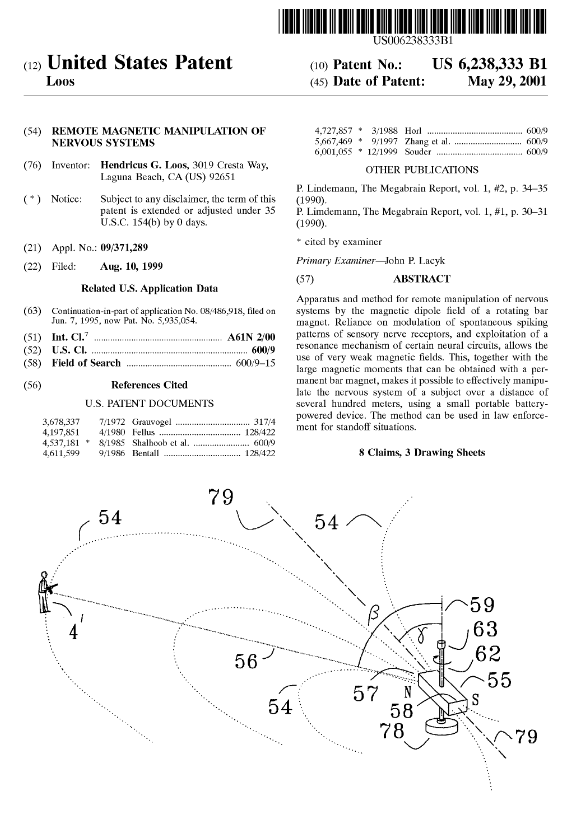The ½ Hz Sensory Resonance - from the patent "Remote magnetic manipulation of nervous systems"

The human nervous System exhibits a Sensitivity to certain low-frequency Stimuli, as is evident from rocking a baby or relaxing in a rocking chair. In both cases, the maximum Soothing effect is obtained for a periodic motion with a frequency near ½ Hz. The effect is here called “the ½ Hz Sensory resonance'. In the rocking response, the Sensory resonance is excited principally by frequency-coded signals from the vestibular end organ. However, the rocking motion also induces body Strains, and these are detected by Stretch receptors residing in the skin and elsewhere in the body. In addition, relevant Signals may originate from thermal receptors which report skin temperature fluctuations caused by air currents that are induced by the rocking motion. All these receptors employ frequency coding in their Sensory function, and it must be that their signals are combined and compared in the brain with the vestibular nerve signals in an assessment of the Somatic State. One may thus expect that the Sensory resonance can be excited not only through the vestibular nerve, but also Separately through the other Sensory modalities mentioned. This notion is Supported by the observation that gently Stroking of a child with a frequency near ½ Hz has a soothing effect. Further support derives from the successful excitation of the ½ Hz sensory resonance by weak external electric fields, as discussed in “Method and Apparatus for Manipulating Nervous Systems”, U.S. Pat. No. 5,782,874. The ½ Hz sensory resonance involves the autonomic nervous System, and it can be used to induce relaxation, Sleepiness, or Sexual excitement, depending on the precise Stimulation frequency and the affected afferent nerves. Another Sensory resonance has been found at about 2.4 Hz;
Related patent: "Subliminal acoustic manipulation of nervous systems"